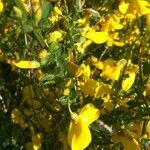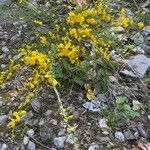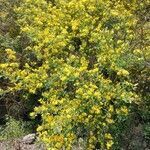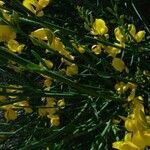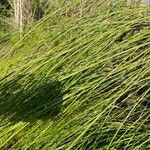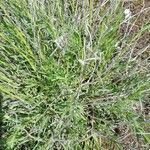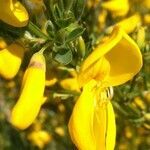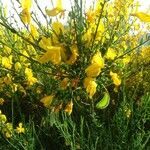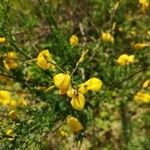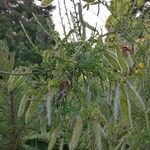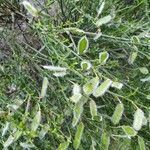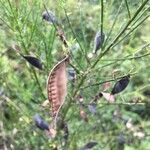Bushy shrub to 2 m, with stiff, slender, green, 5-angled branches; lvs small, mostly 3-foliolate, or the upper 1-foliolate, the petiole 2–8 mm, the lfls obovate, 5–10 mm; fls 20–25 mm, solitary or paired in the upper axils, forming long terminal racemes; pods 3–5 cm, villous along the sutures; 2n=46. Native of Europe, well established in dry sandy soil as an escape from cult., from N.S. to Va., and on the Pacific coast. May, June.
A shrub. It grows 3 m high and spreads 2 m wide. The stem is slender and erect. The branches arch over. The leaves have 3 leaflets. The flowers are yellow and pea shaped. They can be single or in pairs.
